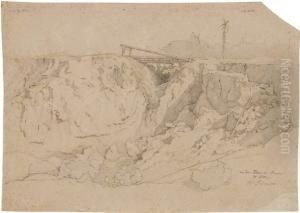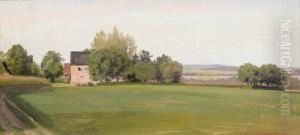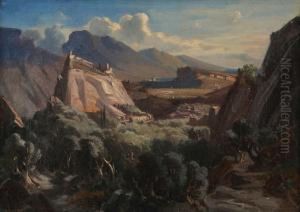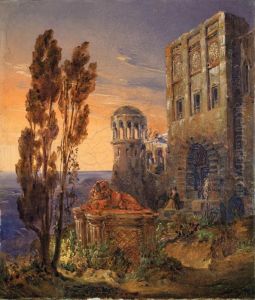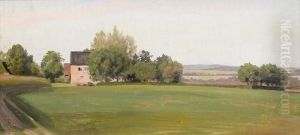Wilhelm August Schirmer Paintings
Wilhelm August Schirmer was a German landscape painter born on September 5, 1802, in Jülich, which was then part of the French Empire but is now located in the German state of North Rhine-Westphalia. Schirmer is associated with the Düsseldorf school of painting, and he was known for his meticulously detailed and idealized landscapes, which were often inspired by his travels and studies of nature.
Schirmer's artistic journey began under the guidance of his father, who was a decorative painter. He received his formal training at the Düsseldorf Academy, where he studied under the influential landscape painter Johann Wilhelm Schirmer (no relation), who was a pivotal figure in the Düsseldorf school. During the early stages of his career, Wilhelm August Schirmer's work was profoundly influenced by his namesake, and he initially focused on similar thematic elements, evoking romanticized natural scenes that were popular during that era.
Throughout his career, Wilhelm August Schirmer undertook numerous study trips, which were common practice among artists of the time, to enhance his understanding of landscape and nature. He traveled extensively within Germany as well as to Italy, where the classical landscapes had a lasting impact on his style and subject matter. Schirmer's Italian landscapes, in particular, became celebrated for their evocative portrayal of light and atmosphere, and they played a significant role in his artistic development.
In the 1830s, Schirmer became a professor at the Düsseldorf Academy, where he influenced a new generation of landscape painters. His teachings and works emphasized the observation of nature combined with a poetic interpretation, which was the hallmark of the Düsseldorf school's approach to landscape painting. Schirmer's prominence in the art world grew, and he became known for his masterful depiction of trees, rocks, and foliage, as well as his ability to capture the varying effects of light.
Wilhelm August Schirmer's contribution to the landscape genre was significant, and his paintings were widely exhibited and collected during his lifetime. His legacy is marked by the way he merged realism with a romantic sensibility, creating works that were both technically accomplished and emotionally resonant. Schirmer continued to paint and teach until his health began to decline. He passed away on April 11, 1866, in Karlsruhe, leaving behind a body of work that continues to be appreciated by art historians and collectors alike.

